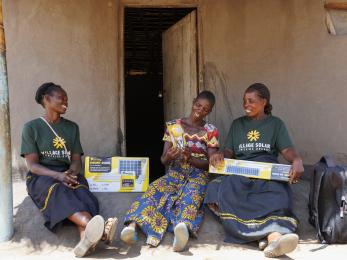Driving Resilience: Market Approaches to Disaster Recovery

After a disaster, the immediate concern of all humanitarian responders is — and should be — to help affected populations meet their basic, urgent needs. But how a response is conducted can have significant implications on how the community recovers — and how fast.
Working with local markets post-disaster can drive recovery and have a multiplier effect by injecting cash into the local economy, improving access to finance, providing economic opportunities for affected individuals, and protecting local networks and social capital. Still, the most effective way to help communities cope with and recover from disaster is to bolster their resilience before a crisis even hits. This requires investing in long-term programming that builds local capacity, strengthens networks, and creates disaster-response plans. To ensure the immediate response maximizes long-term impact, donors and implementing agencies should:
- Analyze local markets and other systems early and frequently, and work in partnership with local businesses and other actors as much as possible to support more widespread and sustainable recovery.
- Fund and implement programs focused on rebuilding local economies and supporting local businesses, in parallel to — not after — basic-needs response.
- Support flexible funding for programs and ensure they can adapt to quickly changing contexts and continue to be relevant to local needs.
- Adapt approaches and lessons from longer-term development programs to support disaster response and recovery.
- Include disaster analysis and preparedness in development programs and work toward the resilience of local communities.
- Document the impact of market-based interventions on the speed and sustainability of disaster recovery.


